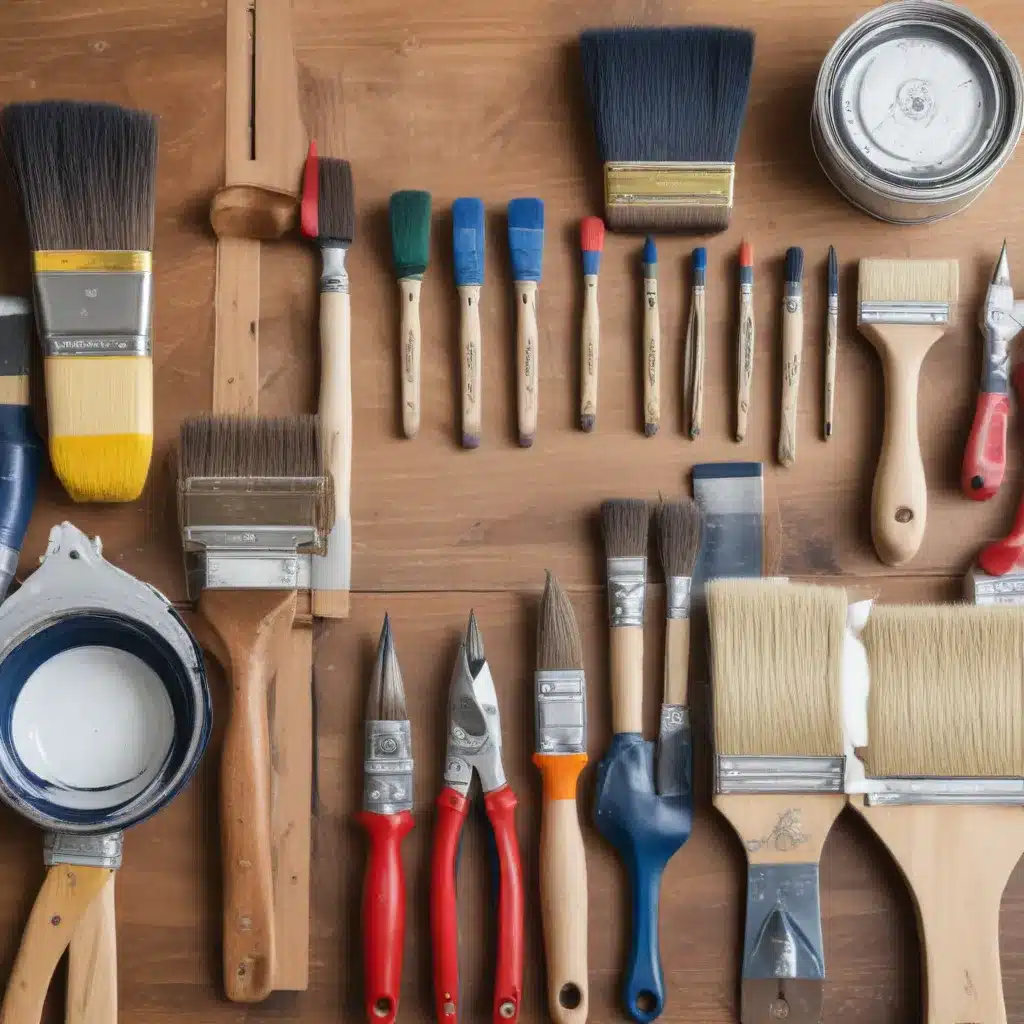Essential Painting Tools Every DIYer Needs in Their Arsenal
When it comes to transforming a space through DIY (do-it-yourself) renovations, few projects can have as dramatic an impact as a fresh coat of paint. Whether you’re tackling a small bedroom refresh or overhauling an entire home, having the right painting tools at your disposal can mean the difference between a professional-looking finish and a frustrating, subpar result. As an experienced home improvement consultant writing for Reluctant Renovator, I’m here to share the essential painting tools every DIYer should have in their arsenal.
Brushes and Rollers
The foundation of any successful paint job lies in the application tools you use. High-quality paint brushes and rollers are a must-have for any DIYer. Look for a variety of brush sizes and shapes to tackle different surfaces and painting tasks with ease. Angled sash brushes are perfect for cutting in along edges and trim, while larger, flat brushes work well for broad, open areas. Investing in premium synthetic bristle brushes will ensure a smooth, even paint application and minimize brush marks.
Equally important are high-quality paint rollers. Choose rollers with a dense, high-quality nap that matches the texture of your walls. For smooth, lightly textured surfaces, a 1/4-inch or 3/8-inch nap roller is ideal. For more heavily textured walls or ceilings, a 1/2-inch or 3/4-inch nap roller will provide better coverage and reduce roller marks. Don’t forget to have a variety of roller sizes on hand, from compact 4-inch rollers for tight spaces to larger 9-inch or 12-inch rollers for broad, open areas.
Specialty brushes, such as corner brushes, trim brushes, and small detail brushes, can also be invaluable when painting. These precision tools allow you to expertly paint along edges, in tight corners, and around intricate details without compromising your results.
Surface Preparation Tools
Proper surface preparation is crucial for achieving a flawless paint finish. Start by gathering the necessary tools for the job, including sandpaper (both coarse and fine grits), scrapers, and putty knives. These tools will help you smooth out imperfections, remove old paint or wallpaper, and fill any cracks or holes before you begin painting.
Painter’s tape and drop cloths are also essential for protecting surrounding surfaces and creating clean, crisp paint lines. Look for high-quality, low-tack painter’s tape that won’t leave residue behind, and invest in durable, absorbent drop cloths to safeguard your floors and furniture.
Paint Application Essentials
With your surfaces prepped and your brushes and rollers at the ready, you’ll need the right tools to efficiently apply the paint. Paint trays and liners make it easy to load your rollers and keep the paint flowing smoothly. If you’re tackling a larger project or want to achieve a professional-looking finish, a paint sprayer can be a game-changer, allowing you to cover broad areas quickly and evenly.
Don’t forget the small but mighty accessories that can make your painting project a breeze, such as paint edgers, extension poles, and paint pails. These tools will help you reach high ceilings, paint tight corners, and minimize spills and drips.
Cleanup and Maintenance
Once the paint has dried, it’s time to tackle the cleanup. Gather paint cleanup supplies, including rags, mineral spirits, and a sturdy paint scraper, to ensure your brushes, rollers, and tools are thoroughly cleaned and conditioned for future use. Investing in brush and roller conditioners can prolong the life of your application tools, saving you money in the long run.
Proper storage and organization of your painting supplies is also essential. Invest in a tool storage system or paint storage cabinet to keep your brushes, rollers, and other essential items in top shape and easily accessible for your next project.
Color Selection and Mixing
Choosing the perfect paint color can be both exciting and overwhelming for DIYers. Understanding the basics of color theory can be a game-changer, helping you confidently select hues that complement your space and personal style.
Color Theory Basics
At the foundation of color theory are the primary colors (red, blue, and yellow), secondary colors (orange, green, and purple), and tertiary colors (the blends of primary and secondary colors). Knowing how these colors relate to one another can help you create harmonious palettes and make informed decisions about color combinations.
Pay particular attention to complementary colors, which sit opposite each other on the color wheel and create a vibrant, high-contrast effect, or analogous colors, which are adjacent on the wheel and produce a more soothing, cohesive look.
Custom Color Blending
If you’re looking to create a unique paint color that perfectly matches your vision, paint mixing cups and stir sticks can be invaluable tools. Experiment with adding small amounts of different paint colors to a base hue, carefully recording your measurements to replicate the exact shade later. Many home improvement stores also offer color matching services, where they can precisely mix a custom color based on a swatch or sample you provide.
Color Inspirations
Feeling stuck on color choices? Explore paint sample collections from your local hardware store or browse online color visualizers to spark inspiration and get a better sense of how a color will look in your space. Many DIY-focused websites, such as Reluctant Renovator, also offer curated color palettes and design ideas to help guide your decision-making process.
Whether you’re tackling a small bedroom refresh or a whole-home transformation, having the right painting tools and techniques at your disposal can make all the difference. By investing in high-quality brushes, rollers, and accessories, preparing your surfaces with care, and understanding the fundamentals of color theory, you’ll be well on your way to achieving professional-looking results that will breathe new life into your home. Happy painting!




